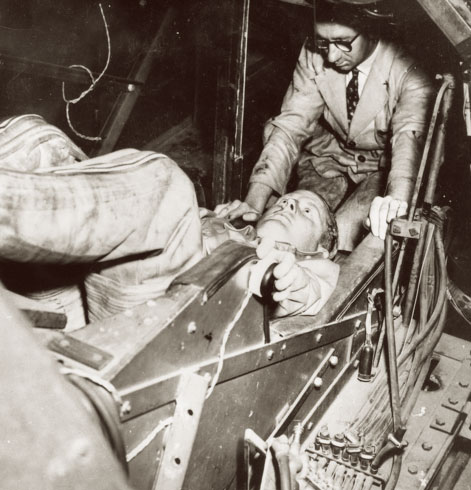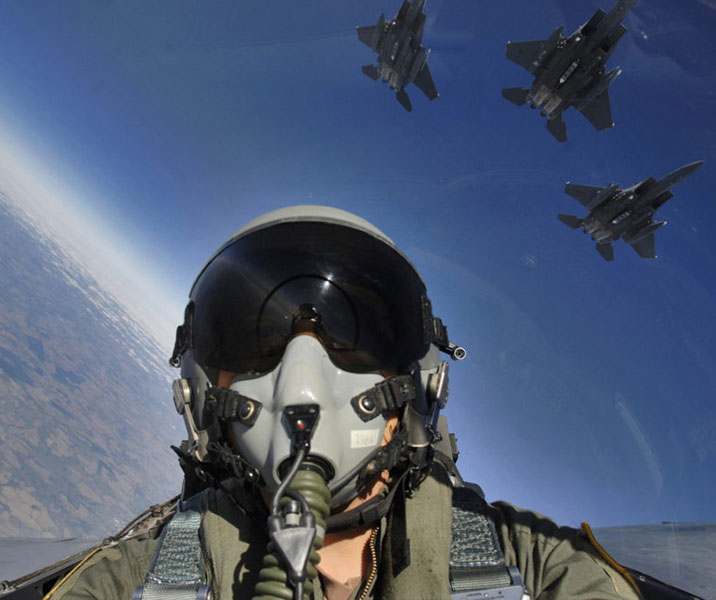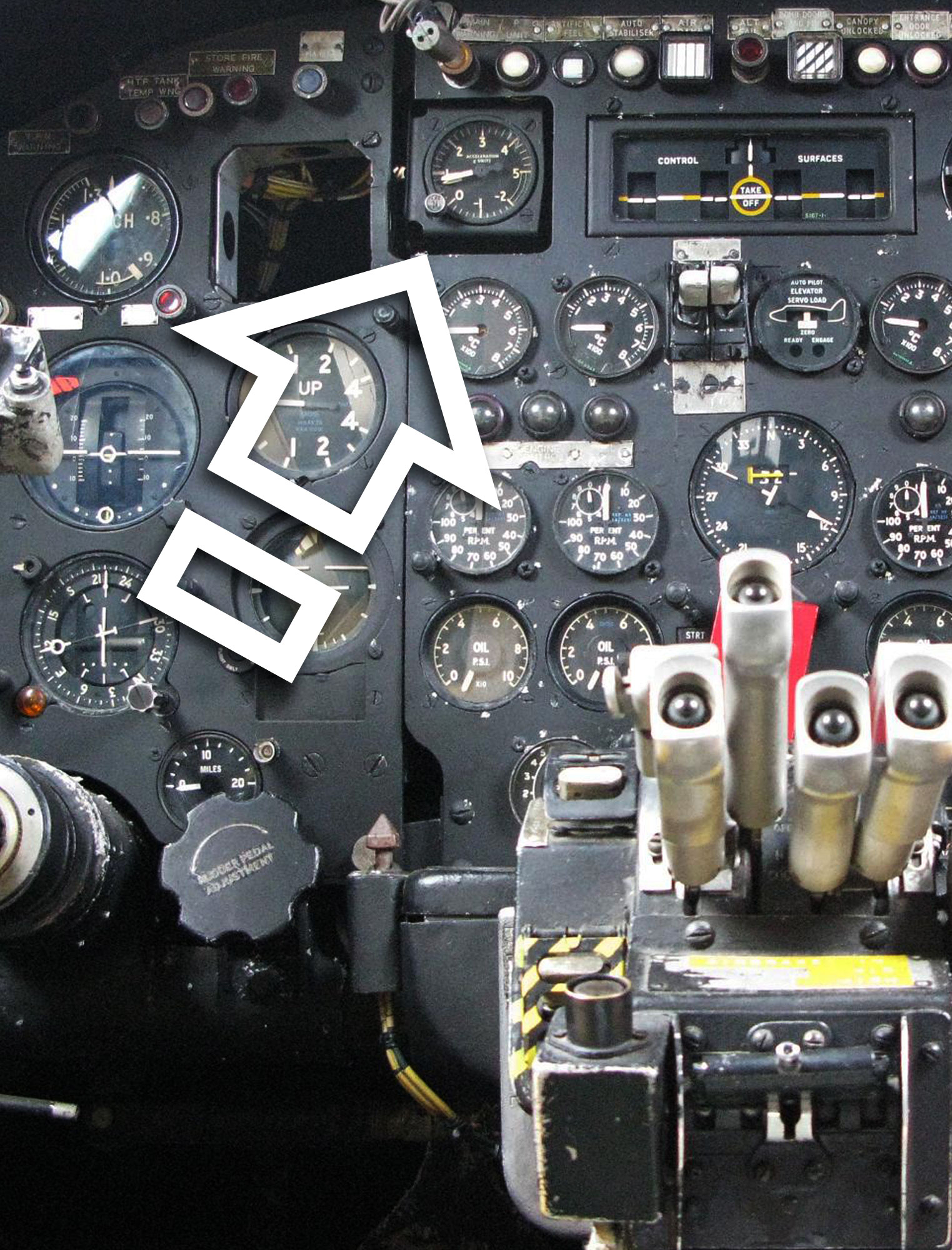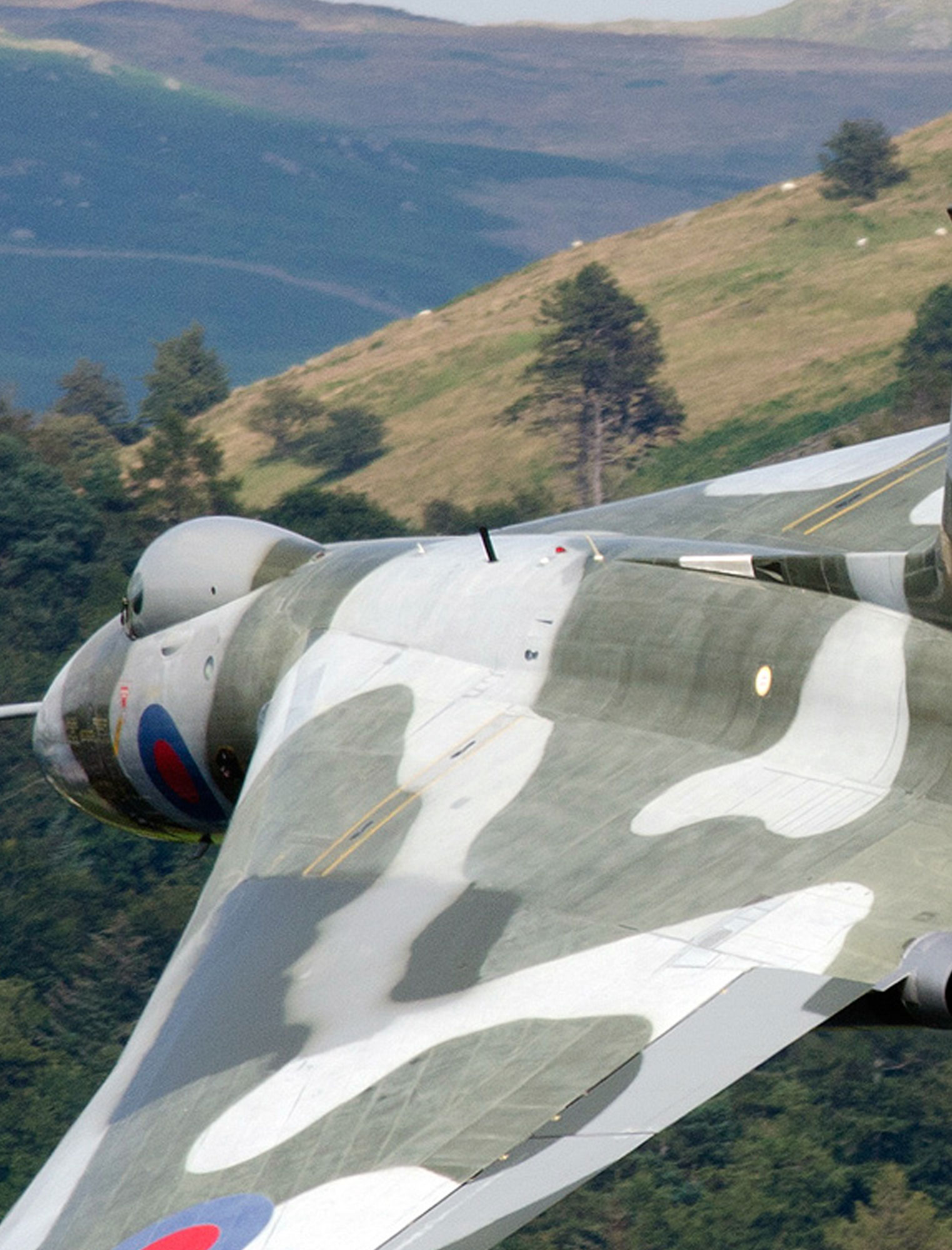- AUST POST SHIPPING
- 0438 654 235
- info@recoverycurios.com
- P.O. Box 7640 Cairns QLD Australia, 4870
-
0
Shopping Cart

AVRO VULCAN, SMITHS KAE 0701W ACCELEROMETER
 Each of the Avro Vulcan’s four 4 × Bristol Olympus Mk.101 / Mk.102 / Mk.104 twin-spool turbojet engines could deliver over 17,000 lb of thrust giving it a climb rate of 6000 ft/min to a service ceiling of over 55,000 ft with a maximum speed in excess of 646 mph or Mach 0.96. In a dive, this would be far greater.
Each of the Avro Vulcan’s four 4 × Bristol Olympus Mk.101 / Mk.102 / Mk.104 twin-spool turbojet engines could deliver over 17,000 lb of thrust giving it a climb rate of 6000 ft/min to a service ceiling of over 55,000 ft with a maximum speed in excess of 646 mph or Mach 0.96. In a dive, this would be far greater.
 The G forces exerted by such rapid acceleration on both crew and aircraft can be enormous and need to be constantly monitored to keep within the limitations of the human body’s tolerance and that of the jet's airframe.
The G forces exerted by such rapid acceleration on both crew and aircraft can be enormous and need to be constantly monitored to keep within the limitations of the human body’s tolerance and that of the jet's airframe.
 Military pilots have long worn pressurised G suits which work to counteract the acceleration forces on their bodies but an aircraft’s components and airframe has no such protection and are rated for operation within defined parameters.
Military pilots have long worn pressurised G suits which work to counteract the acceleration forces on their bodies but an aircraft’s components and airframe has no such protection and are rated for operation within defined parameters.
Too high a G force can cause a pilot to loose consciousness whilst continual and constant G forces on an airframe will rapidly deteriorate its service life and at worse, cause a catastrophic break up of the aircraft in midair.
To monitor the stresses imposed on both pilot and airframe, an Accelerometer is mounted at the pilot’s eye level on the main flying panel
 Whilst primarily used to monitor the forces acting on the airframe, accelerometers are also used as part of the aircraft’s inertial reference navigation system.
Whilst primarily used to monitor the forces acting on the airframe, accelerometers are also used as part of the aircraft’s inertial reference navigation system.
Most accelerometers are mechanical with direct-reading instruments calibrated to indicate force in Gs. One G being equal to one times the force of gravity and the dial face of an accelerometer is scaled to show both positive and negative forces on the aircraft.
 When an aircraft is put in a rapid climb, a positive G force pushes the pilot back into their seat. The faster the climb the greater the G forces exerted. A rapid descent will apply force in the opposite direction resulting in a negative G force.
When an aircraft is put in a rapid climb, a positive G force pushes the pilot back into their seat. The faster the climb the greater the G forces exerted. A rapid descent will apply force in the opposite direction resulting in a negative G force.
The accelerometer operates on the principle of inertia. A mass, or weight, inside slides freely along a shaft in response to the slightest acceleration force in either direction. When a manoeuvre creates an accelerating force, the aircraft and instrument move, but inertia causes the weight to stay at rest in space. As the shaft slides through the weight, the relative position of the weight on the shaft changes. This position corresponds to the G force experienced.
Through a series of pulleys, springs, and shafts, the instrument’s pointers are moved around the dial to indicate the relative strength of the acceleration force. Although most cockpit gauges are of the single-axis type. Inertial reference navigation systems make use of multi-axis accelerometers to continuously, mathematically calculate the location of the aircraft in a three dimensional plane
 Most accelerometers like this Smiths KAE 0701W, have three pointers. One is continuously indicating the acceleration force experienced. The other two contain ratcheting devices. The positive G pointer follows the continuous pointer and stays at the location on the dial where the maximum positive force was experienced. The negative G pointer does the same for negative forces experienced. Both max force pointers can be reset with a knob on the instrument face.
Most accelerometers like this Smiths KAE 0701W, have three pointers. One is continuously indicating the acceleration force experienced. The other two contain ratcheting devices. The positive G pointer follows the continuous pointer and stays at the location on the dial where the maximum positive force was experienced. The negative G pointer does the same for negative forces experienced. Both max force pointers can be reset with a knob on the instrument face.
 The instrument’s ability to capture the highest and lowest G load during the Avro Vulcan’s long missions, was critical to monitoring the stresses on the aircraft, never more so than when carrying a full load of nuclear armaments and fuel.
The instrument’s ability to capture the highest and lowest G load during the Avro Vulcan’s long missions, was critical to monitoring the stresses on the aircraft, never more so than when carrying a full load of nuclear armaments and fuel.
This Smiths KAE 0701W Accelerometer has a rating between 5 and minus 2 G and was installed at the bottom left of the pilot’s main flying panel just above the aircraft's Rate of Climb Indicator. Service markings on its rear casing indicate it had an operational life of approx. 6 years, being serviced annually.
With a clear glass face and relatively unmarked casing, this Smiths KAE 0701W Accelerometer appears to be in full working order after we mounted it on the dash of our trusty Nissan X Trail and floored the pedal before then stomping on the brakes. No chance of loosing consciousness from an over abundance of G forces but all the needles moved in the right directions and pressing the reset button took them back to zero again.
If anyone would like to loan me their Maserati Levante sports car, I’d be quite happy to take it for a spin and tell you it’s G force readings!
With a highly detailed 1/72 scale model of the Avro Vulcan perched atop its hand crafted mango wood stand, this would make a fantastic gift for any aviation enthusiast.
This Avro Vulcan Instrument comes complete with detailed Scale Model, Mango Wood Stand & Plaque plus Printed Fact Sheet featuring photo of instrument in aircraft cockpit.
Your Avro Vulcan Smiths KAE 0701W Accelerometer, Original Recovery Curios Warbird Collectable includes:
- Original Warbird instrument
- Highly detailed hand-built and airbrushed 1/72 plastic scale model of the aircraft,*
- Hand-crafted and beautifully finished 100yr, Far North Queensland Mango Wood display stand
- Detailed, 2-sided, printed and laminated Instrument Fact Sheet detailing aircraft and instrument
- Removable Magnetic Display Arm
The 1/72 scale hand-built and airbrushed plastic model is available with 'wheels & flaps up or down', and a choice of two Squadron markings and camouflage.
Upon order placement you will receive an email asking for your preferred configuration.
Your complete Recovery Curios Original Instrument Collectable is securely packed and delivery normally takes between 3 - 4 weeks approx.
Did you fly, crew or maintain a Avro Vulcan or have a friend, colleague or family member who did? Check out our PERSONALISED ORIGINAL INSTRUMENT COLLECTABLE OPTION here.
- LAND
- SEA
- AIR
- VINTAGE ORIGINAL AIRCRAFT INSTRUMENTS
- HAWKER TYPHOON
- VICKERS WELLINGTON
- FAIREY GANNET
- RYAN ST-A SPORTS TRAINER
- DE HAVILLAND TIGER MOTH
- HAWKER HUNTER
- Mc DONNELL DOUGLAS KC-10 AERIAL TANKER
- SOPWITH CAMEL
- AIRCO DH.1 AND DH.2
- JUNKERS JU 87
- CURTISS C-46 COMMANDO
- HANDLEY PAGE HAMPDEN
- SUPERMARINE SEAFIRE
- B-25 MITCHELL BOMBER
- BRISTOL BLENHEIM
- ENGLISH ELECTRIC LIGHTNING
- HAWKER TEMPEST MkVI
- YAKOVELOV YAK - 3
- FOCKE-WULF FW190
- FOLLAND GNAT
- AIRSPEED OXFORD
- SHORT STIRLING
- AVRO ANSON
- DOUGLAS C-133 CARGOMASTER
- HANDLEY PAGE VICTOR BOMBER
- DE HAVILLAND SEA VENOM
- VICKERS VALIANT BOMBER
- DOUGLAS A-26 INVADER
- GRUMMAN S2F TRACKER
- SUPERMARINE SPITFIRE
- LOCKHEED P2-V NEPTUNE
- P-51 MUSTANG
- BRISTOL BEAUFIGHTER
- DE HAVILLAND MOSQUITO
- B-26 MARTIN MARAUDER
- P3 ORION
- DOUGLAS A-20 HAVOC
- P-39 AIRACOBRA
- AVRO SHACKLETON
- B-17 FLYING FORTRESS
- B-24 LIBERATOR
- MESSERSCHMITT BF-110
- MESSERSCHMITT BF-109
- BRISTOL BEAUFORT
- KAWASAKI Ki-45 (NICK) INTERCEPTOR
- C-130 HERCULES
- CAC BOOMERANG
- AVRO LANCASTER
- GRUMMAN F4F WILDCAT
- F4U VOUGHT CORSAIR
- WESTLAND LYSANDER
- P-47 REPUBLIC THUNDERBOLT
- NORTH AMERICAN T-6 TEXAN - HAVARD
- C-47 SKYTRAIN
- DOUGLAS SBD DAUNTLESS
- CAC WIRRAWAY
- PBY CATALINA
- P-40 WARHAWK
- FAIREY SWORDFISH
- P-38 LIGHTNING
- HAWKER HURRICANE
- CURTISS SB2C HELLDIVER
- GRUMMAN F6F HELLCAT
- SEAKING HELICOPTER
- SEAHAWK HELICOPTER
- DOUGLAS A4G SKYHAWK
- GRUMMAN TBF AVENGER
- HANDLEY PAGE HALIFAX
- DOUGLAS SKYRAIDER AE-1
- GLOSTER METEOR
- JUNKERS JU-88
- F-86 SABRE JET
- SHORT SUNDERLAND
- B-29 SUPER FORTRESS
- F-9F GRUMMAN PANTHER
- F-100D SUPER SABRE
- BELL UH-1 HUEY HELICOPTER
- AVRO VULCAN STRATEGIC BOMBER
- CANBERRA BOMBER
- DHC-4 CARIBOU
- BLACKBURN BUCCANEER
- DE HAVILLAND VAMPIRE JET
- HAWKER SEA FURY
- LOCKHEED HUDSON
- LOCKHEED EC-121 WARNING STAR
- SEPECAT JAGUAR
- HAWKER SIDDELEY NIMROD
- HAWKER SIDDELEY HARRIER
- ARADO AR 196
- VOUGHT OS2U KINGFISHER
- LOCKHEED ELECTRA
- NORTHROP P-61 BLACK WIDOW
- BOEING CH-47 CHINOOK
- LOCKHEED PV-1 VENTURA
- BOEING P26-A 'PEASHOOTER'
- Ilyushin Il-2 ‘Sturmovik’
- WESTLAND WESSEX
- FAIREY FIREFLY
- VINTAGE AVIATION COLLECTABLES
- VINTAGE COLLECTABLE MODEL AIRCRAFT KITS
- RETRO STYLE METAL AIRCRAFT COLLECTABLES
- VINTAGE ORIGINAL AIRCRAFT INSTRUMENTS




